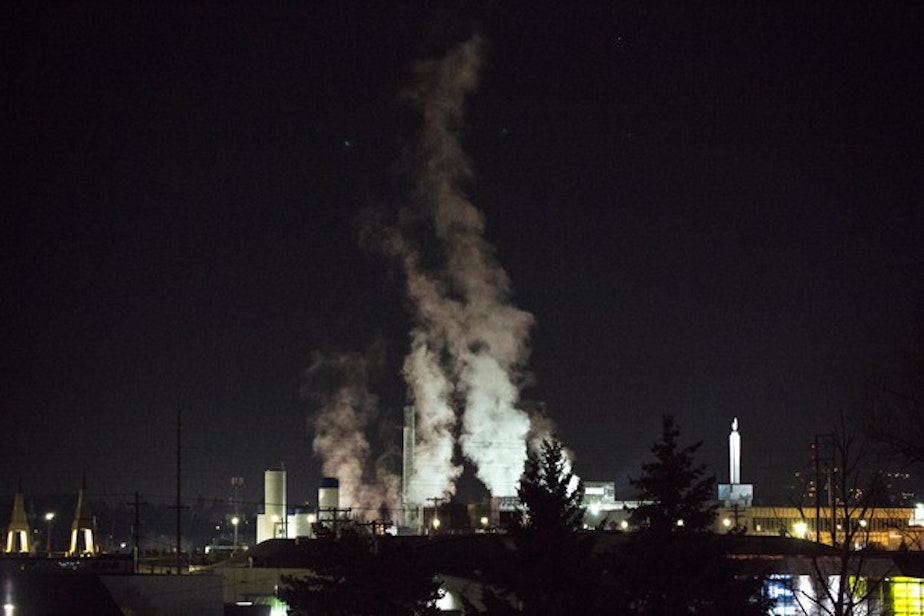Report: Economic Benefits Of Cap And Trade Will Outweigh The Costs In Oregon

Steam rises from the Darigold facility in Portland, Oregon, Thursday, Feb. 7, 2019.
A new economic report finds Oregon’s proposed cap-and-trade plan would create thousands of jobs and boost household income while creating only modest increases in energy prices.
Moreover, the report concludes, the more aggressive interim cap on greenhouse gas emissions proposed for 2035 would create even more economic benefits than a more gradual decline in emissions from 2021 and 2050.
An analysis by Berkeley Economic Advising and Research finds capping greenhouse gas emissions as proposed in House Bill 2020 would spur widespread adoption of energy-saving technology by the year 2050.
That, in turn, will create significant economic growth, said the research company's director, David Roland-Holst.
The company analyzed the possible outcomes of Oregon's cap-and-trade plan using economic forecasting tools, existing economic data and the basic outline of the proposed policy, which aims to reduce greenhouse gas emissions to 80 percent below 1990 levels by 2050.
Sponsored
"We find Oregon can meet its 2050 climate goals in ways that achieve higher aggregate economic growth and employment," he said in reporting his findings to the Joint Committee on Carbon Reduction Friday.
"This will require a fundamental restructuring of Oregon’s economy. It’s not a simple matter," he said. "The economy of Oregon 30 years from now is going to be a very different from the one we’re sitting in today."
The analysis concludes the cap-and-trade program would grow Oregon's economy by 2.5 percent and add 23,000 jobs by 2050.
Sen. Alan Olsen, R-Canby, who sits on the committee, questioned the findings.
“How did you come up with the statistic that average household income would rise when all their fuel costs are going to go up, their electricity will go up, natural gas will cost more?” he asked.
Sponsored
Roland-Holst explained that his analysis shows energy price increases over the first 20 years of the program will be "very modest" – growing by single-digit percentages. That finding is based on a lower expected price for the pollution permits companies with high emissions will have to purchase under the cap-and-trade plan.
Meanwhile, he said, energy-saving technology connected to the electrification of cars and "decarbonization" of the electrical supply chain will save Oregonians money that they will spend in other places to create job and income growth.
Roland-Holst also noted that "the last mile" of the program will face challenges in reducing the use of natural gas for heating and industry.
Later in the meeting, lawmakers heard from natural gas utilities about dramatic increases in the rates they expect to have to charge their customers under the cap-and-trade program.
Kathryn Williams, director of government affairs for NW Natural, told lawmakers her company has crunched some numbers and found natural gas prices will likely increase by double-digit percentages throughout the program.
Sponsored
In the early years, she said, rates are expected to go up by 11 percent for residential customers and by 13 percent for commercial customers, and the increases would grow as the program continued to 2050.
Williams proposed changing the language in the existing bill to give gas utilities free pollution permits in the first year of the program and reduce those free permits as time goes on.
"We share the goal of reducing emissions and do not oppose cap and trade," she told lawmakers. "We want to work with all of you to find a more equitable way to treat natural gas customers" [Copyright 2019 EarthFix]



